In the past, the first association made with Volvo was safety, but today its image is increasingly associated with electric propulsion, namely with the new Polestar brand. This is, then, the Polestar 1 , the “High Performance Electric Hybrid”, the first series production car that Volvo's new electric brand hits European roads. A Grand Tourer with carbon fiber bodywork, hybrid propulsion and explosive power.
At least on the outside, we almost come to question its roots, but the Polestar 1 is based on the same SPA (Scalable Product Architecture) as the Volvo S90, for example.
However, unlike the rather conservative Swedish sedan, the Polestar 1 is really attractive, with a much more sporty and dynamic styling showing itself every time you stop at a traffic light with its 4.58 m long, 1.96 m wide and just 1.35 m high ready to fire on the road when the green light comes on.
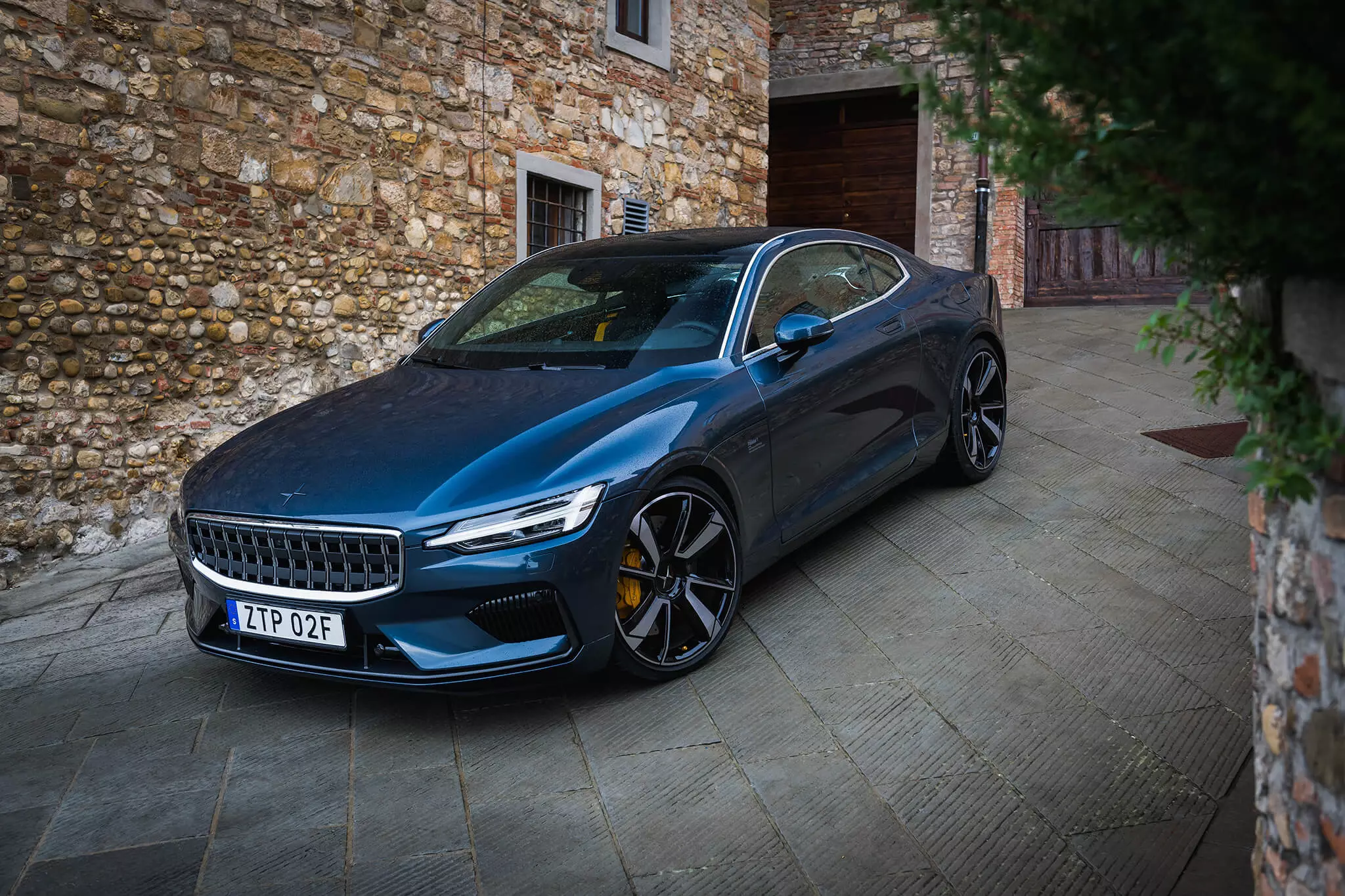
For those who may have doubts about the identity of the newcomer, a detail reveals the umbilical connection to the Volvo style universe: the unmistakable “Thor's hammer” headlamps.
The one-piece “shell” hood helps create a premium look, while the lines between side panels help to emphasize the distance between the wheels (21″) and the front doors.
Subscribe to our newsletter
The very long doors also mark the coupé's design and help with entrances and exits at the rear, while the wicket door handles reinforce the “clean” look and make a small contribution to improving aerodynamic efficiency (the same can be said from side to face mirrors). The rear width, on the other hand, is highlighted by the “C” shaped headlamps.
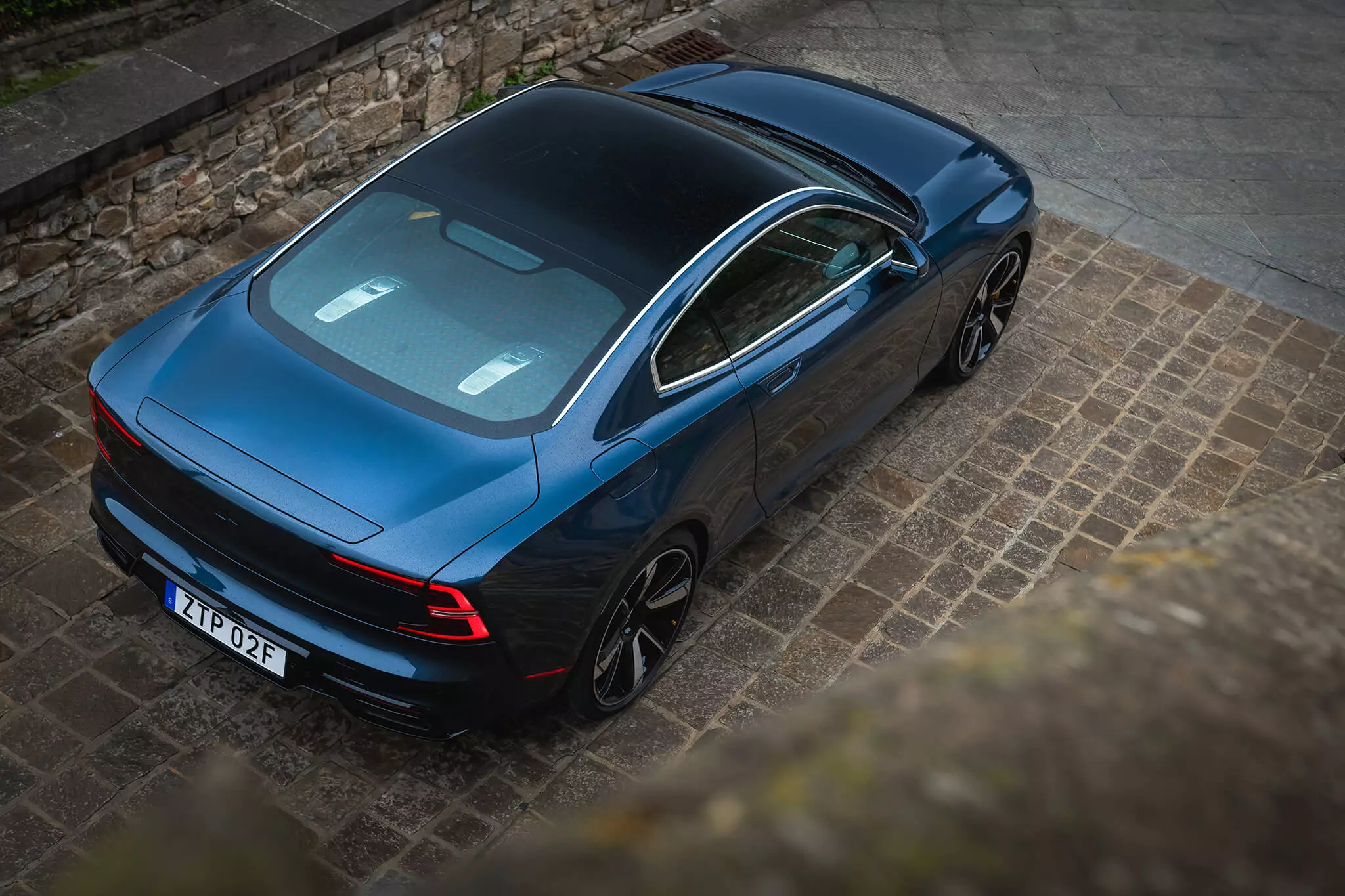
Smells like Volvo…
I go in and practically everything has the Volvo signature: central monitor, instrument panel, steering wheel, seats, pedals, handles… And this is positively observed, even though some might argue that selling a Volvo interior in a car almost three times more expensive is a debatable decision.
One of the differentiating elements is the handcrafted Orrefors crystal case selector with the Polestar logo engraved. Both the build quality and the materials are all first-class Swedish, even if made in China, where every Polestar 1 is assembled in the new factory in Chengdu.
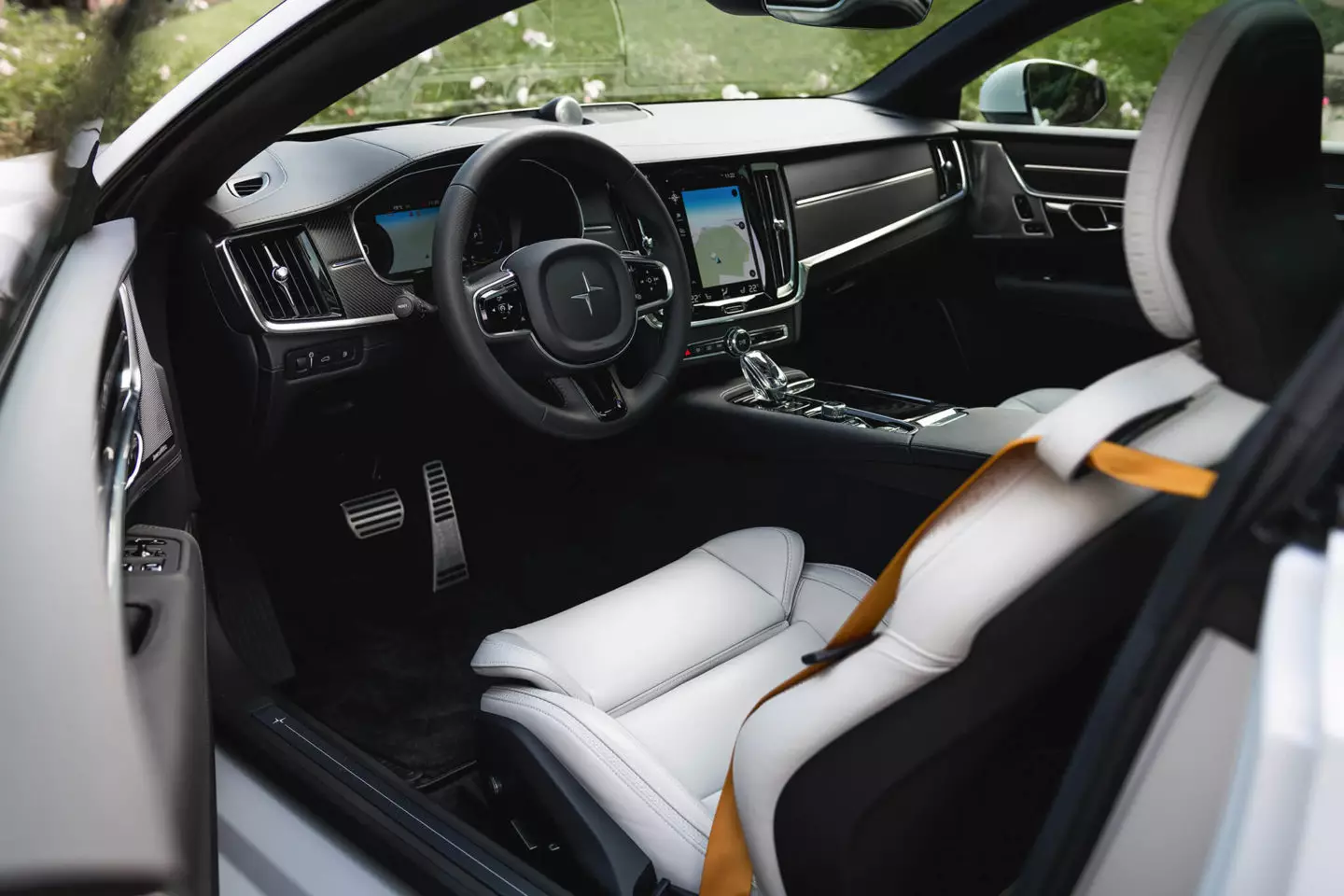
Polestar says that its first model is a 2+2, but that's being very optimistic. The two “resource” seats in the second row are better suited as an additional luggage compartment (not least because the cargo space is really tight, being full of batteries) than to transport any occupant with enough space to ensure minimal comfort ( the legs collide with the back of the seats and there is a beam above the head of the person sitting in the back).
At the front, it has enough space for two people, despite the large central tunnel, under which one of the two batteries is mounted. The second is installed on the rear axle and is not only responsible for having only a residual storage volume, it is also the reason for a small visual trick: behind an acrylic cover can be seen the connections of the orange cables of the electronics. drums.

Four Power Sources
Although Volvo has already limited the maximum speed of its cars to 180 km/h, Polestar engineers have managed to create some magic by going well above that limit and including a mechanical rear wing integrated in the tailgate, which automatically rises at cruising speeds. above 100 km/h (and which can be raised and lowered manually).
Polestar 1 has four power sources on board. Starting with a four-cylinder engine with turbo and compressor mounted at the front, with a displacement of 1969 cm3, a peak power of 309 hp and a maximum torque of 420 Nm, which exclusively powers the front axle.
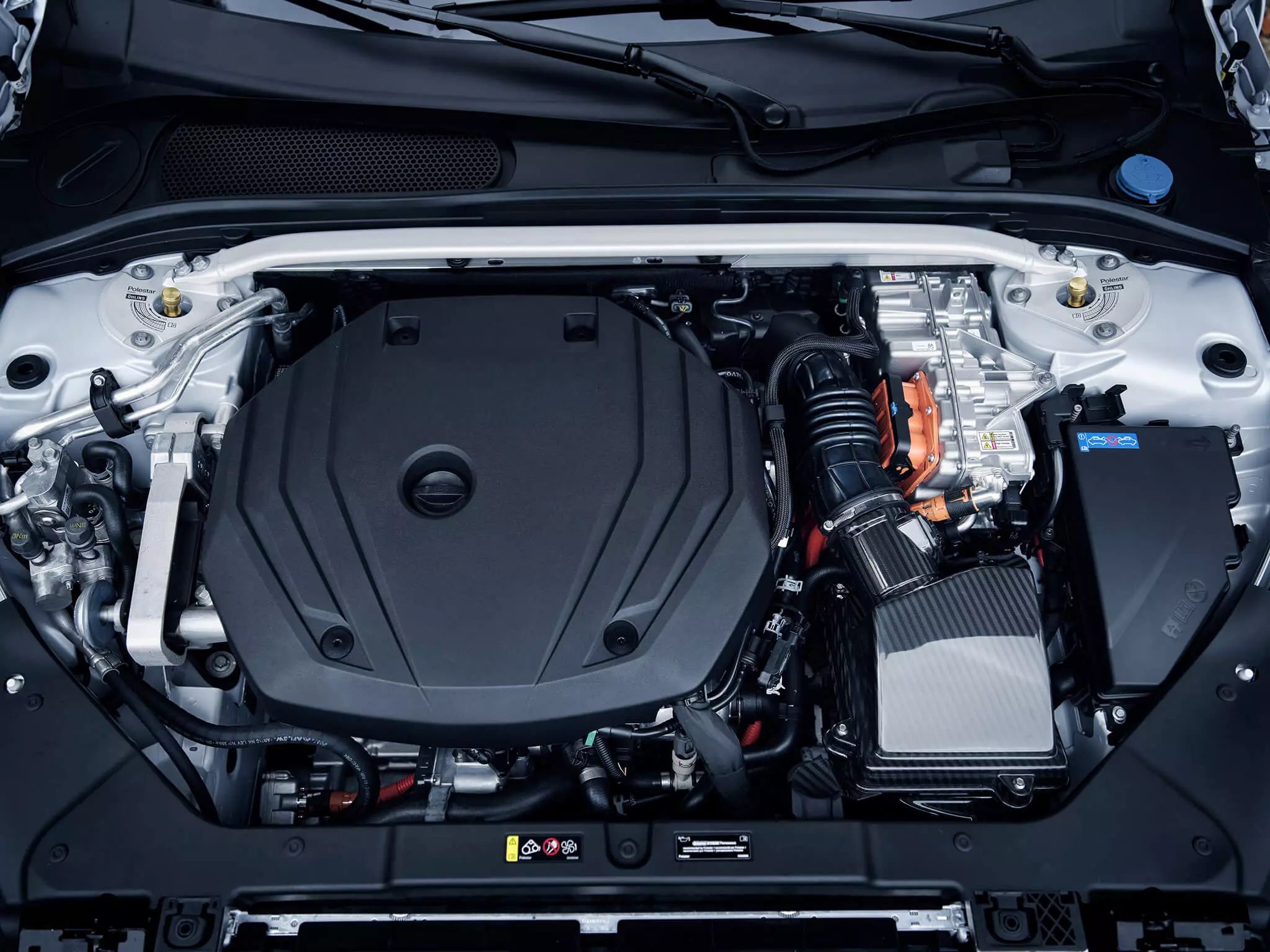
This is aided by two electric motors, on the rear axle, with a power of 85 kW (116 hp) and a torque of 240 Nm each, linked by means of a planetary gear transmission, but managed independently of each other.
The fourth source is the 52 kW (68 hp) 161 Nm generator/alternator starter, connected directly to the crankshaft of the combustion engine, which provides additional electrical torque when the internal combustion engine is running, including during the gearshifts (also allowing the gasoline engine to charge the batteries up to 80% if desired or necessary).
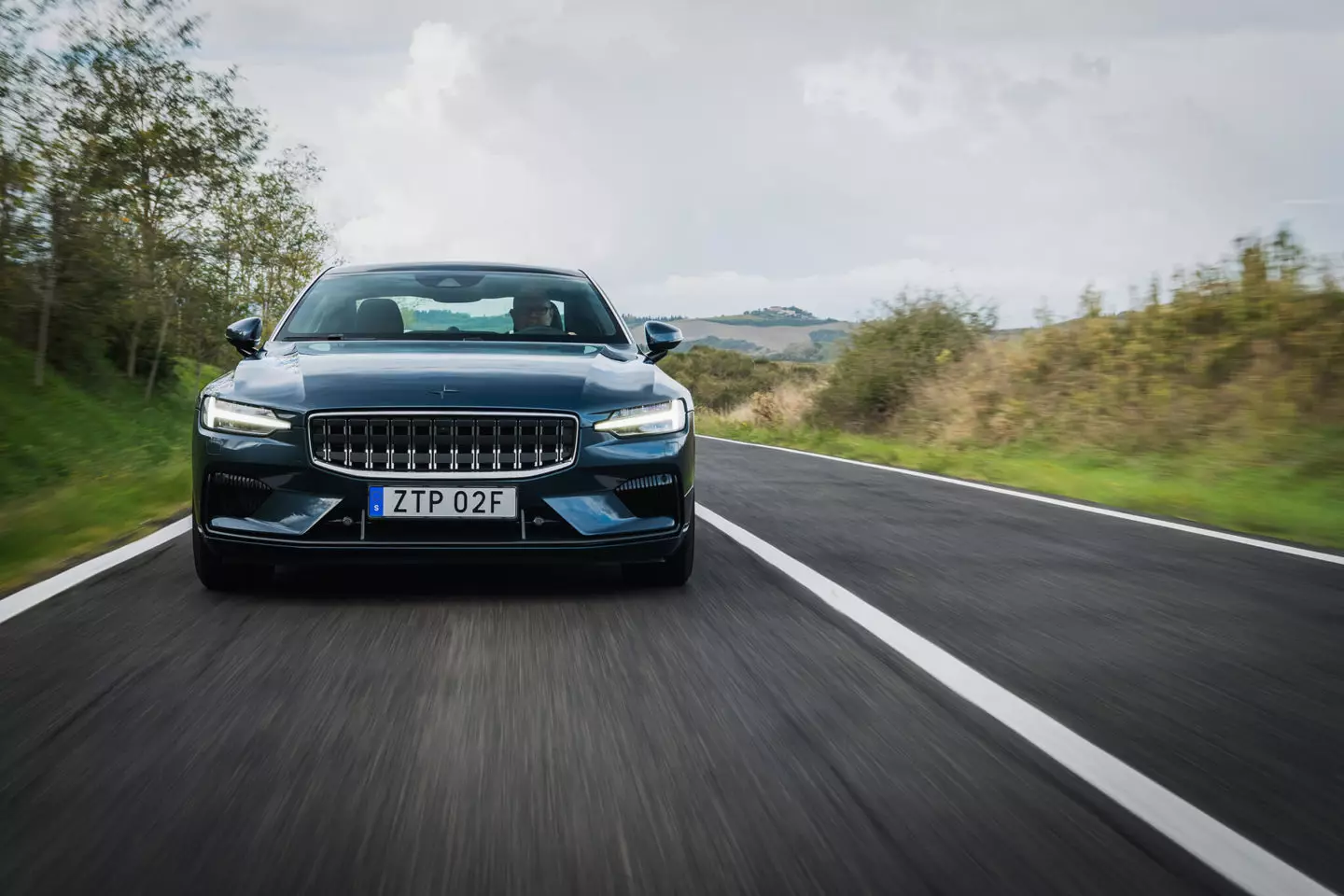
And the accumulated result of the yield is a very attractive 608 hp and 1000 Nm . Running on purely electrical energy, the maximum speed is 160 km/h, but when the internal combustion engine is used it is possible to reach 250 km/h.
The hybrid mode gives priority to electric operation and when the gasoline engine is started we only notice it by looking at the tachometer. Or, on some occasions, through the background sound with a sporty but moderate acoustic note.
Polestar 1. The greatest autonomy… for a plug-in hybrid
The 34 kWh battery guarantees a purely electric range of 125 km — the highest that currently exists among the plug-in hybrids on the market — enough to make the Polestar 1 a consistent emission-free vehicle for urban and extra-urban use. Volvo's claim? It is that this is a hybrid car that can be driven on a daily basis only with electricity.
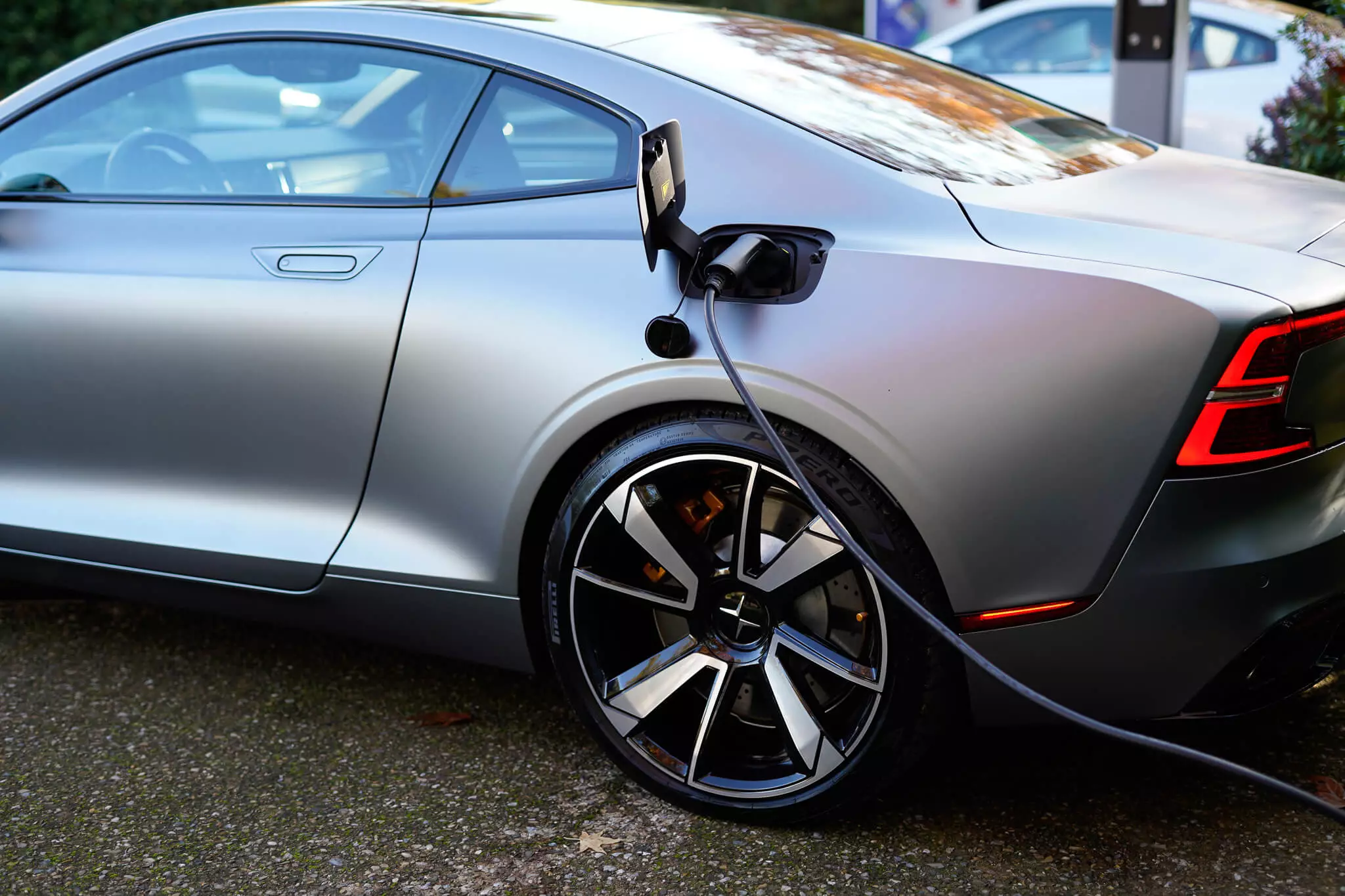
Furthermore, with the proper setup, recovery works very well and the car decelerates after every “dramatic” acceleration and partially refuels the battery to improve overall efficiency performance, leading to an official gasoline consumption of… 0.7 l /100 km (15 g/km of CO2).
Like most electric cars, the Polestar 1 can be steered with just the accelerator pedal. During this dynamic experiment in the Italian city of Florence (in Tuscany), the battery remained on half a charge after 150 km and despite having been used solo for relatively long periods.
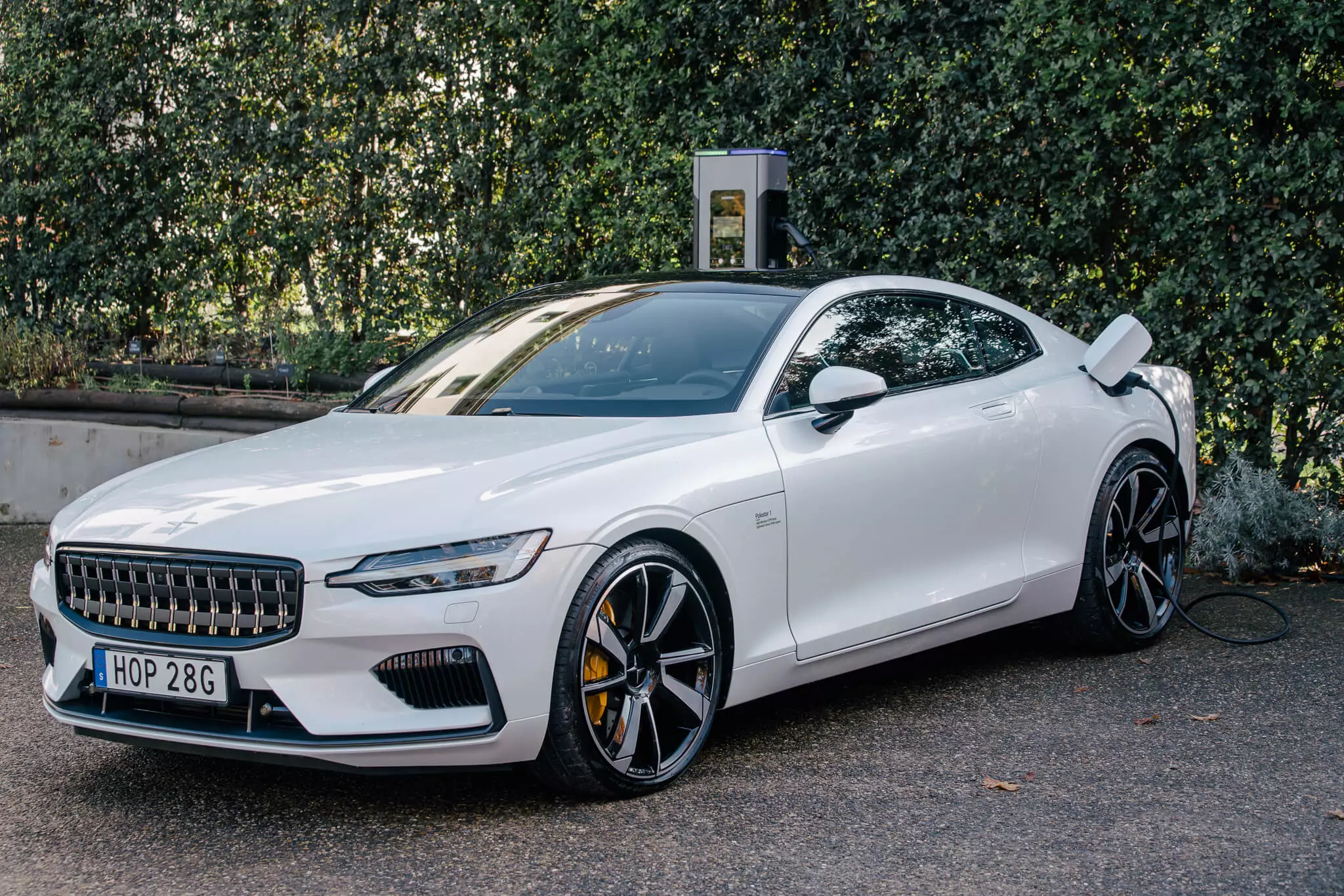
But when the battery is empty it can be recharged with up to 50 kW in less than an hour in a fast charging station, which are starting to exist in greater numbers in Europe and the United States.
A lot of "labor" in the tuning of the chassis
In this price range, cars are expected to have an adaptable chassis so that, with a simple touch of a button, the driver can set the “Sport” or “Comfort” positions, among other modes. Well, actually suspension comfort can also be influenced on Polestar 1, but with a lot more “manpower”.
As standard, this coupé has an intermediate suspension configuration that is quite sporty: you don't feel all the ants you crush on the road, but you should be ready to sense when the same happens to a cockroach, which means that poorly maintained asphalts will be noticed. through the spine much more than most drivers would like.
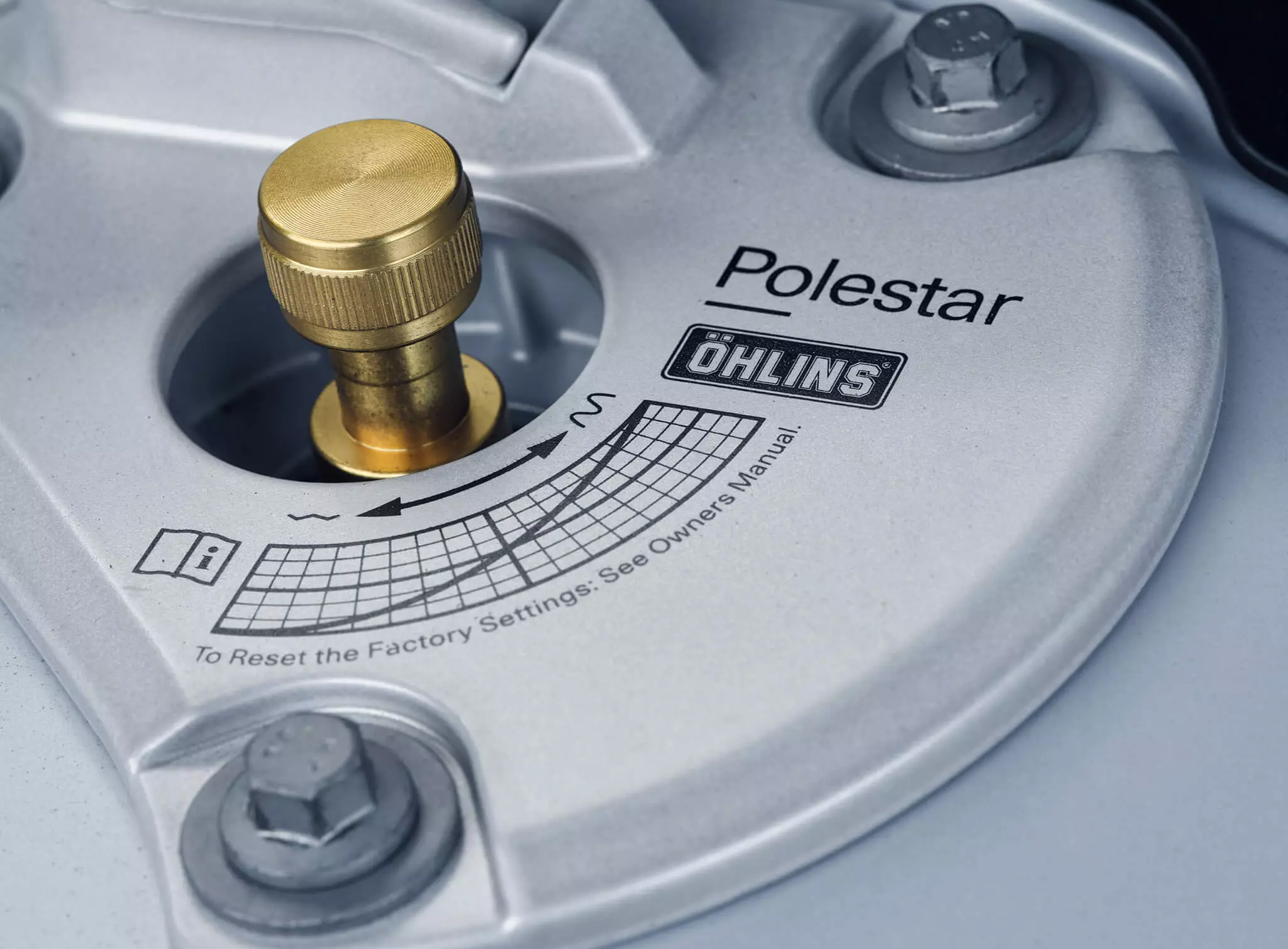
Alternatively, you can change the suspension's firmness, but it won't be a light job: first open the bonnet, then turn the knurled screws on top of the Öhlins shock absorbers (double-flow and manually adjustable) left and right (there are 22 positions to choose from), close the bonnet, remove the jack and use it to raise the car until your hand can pass between the wheel and the wheel arch, feel and remove the rubber cap over the bolt knurled on the back, unscrew the screw, replace the rubber cap, keep your fingers safe, lower the car… and repeat all over again for the left wheel.
Worthy of a service stop on a rally, only here performed by a much more inexperienced mechanic...
In all honesty, it's hard to understand why the engineers didn't simply install a normal control system with some sort of command within easy reach of the driver's hand inside the car. Differentiation, character… ok… but it's a bit exaggerated, to be nice…
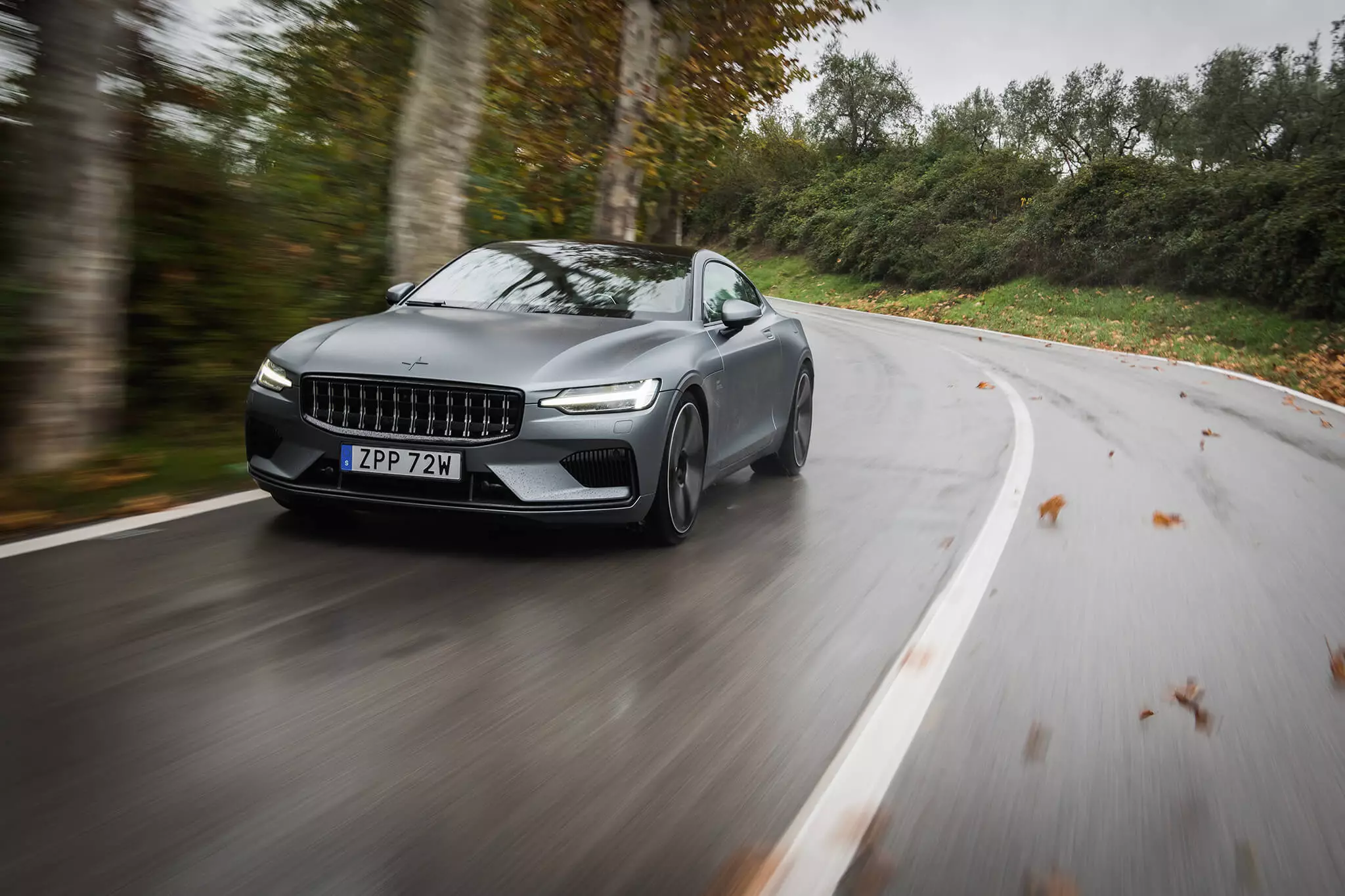
The good news is that, after this complex mise-en-scene, the Polestar 1's bearing quality is significantly better — if you move from 9 at the front and 10 at the rear (the standard ones) to smoother ones — and the occupants they can stop suffering in the skeleton whenever a wheel passes through an irregularity in the asphalt.
numbers say it all
In all other respects, this Polestar 1 chassis — overlapping double wishbones at the front, with an independent multi-arm architecture at the rear — is capable of handling the opulent forces provided by the three power sources.
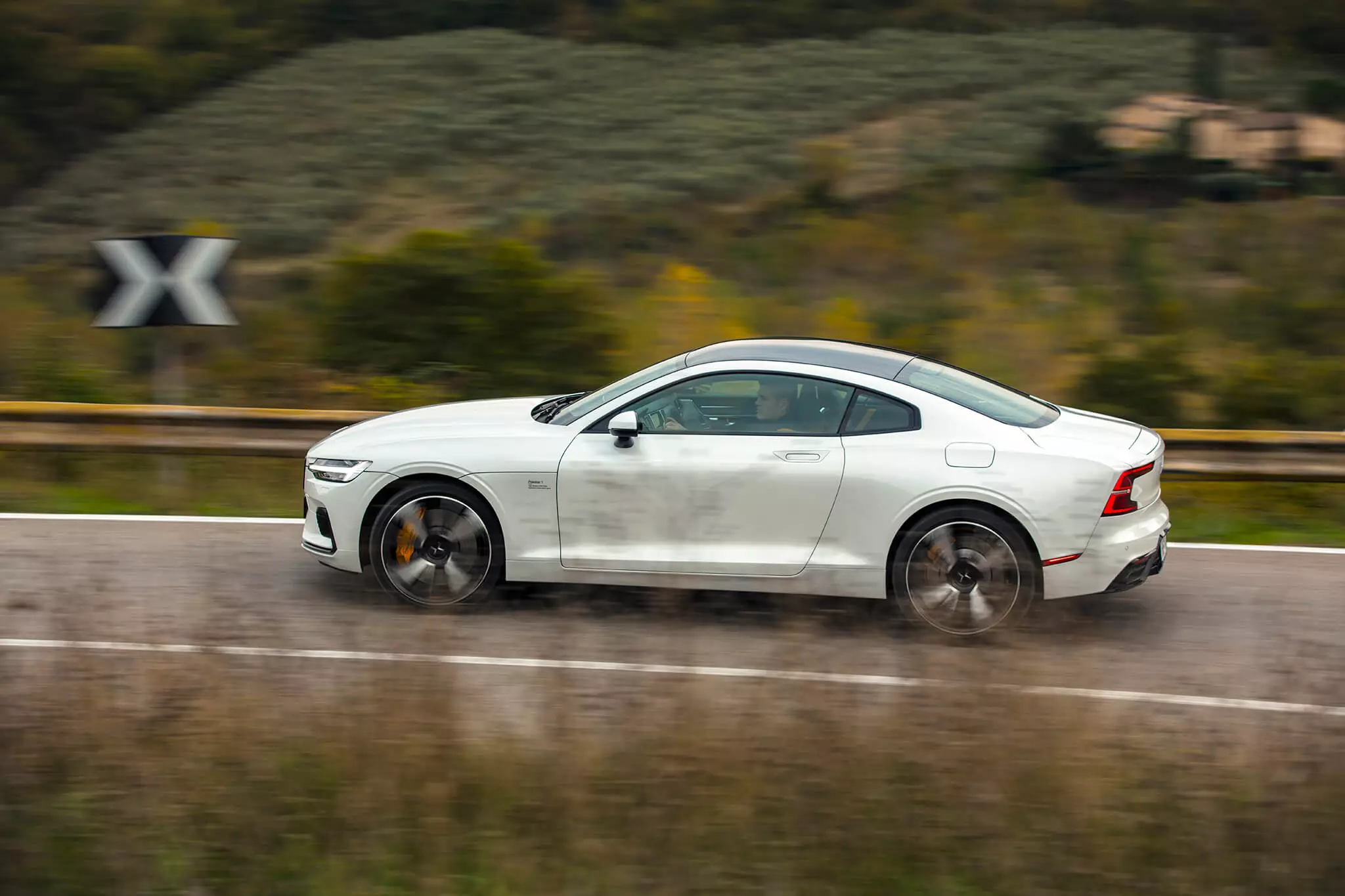
If you want to, it can catapult the GT hybrid from 0 to 100 km/h in just 4.2s — as fast as a Porsche 911. Surprising, not least because it weighs no less than 2.35 tonnes, despite the body made of fiber-reinforced polymer. carbon, which saves 230 kg and provides 45% greater rigidity.
But perhaps even more impressive are the very fast speed recovery: 80-120 km/h in just 2.3s, which is when you really feel the electric push (and to which the generator/alternator, the third electric motor also contributes on board).

Ideally, any frantic start-up should be done on a dry road, if possible. If we experience it on wet roads, the electronics need a brief moment before maximizing grip and going back to blistering throttle mode.
Now zigzag
Driving on zigzag roads for a while at a fast speed reveals the Polestar 1's precise handling and the ease with which it is able to stay on course and exit curves with little or no hesitation.
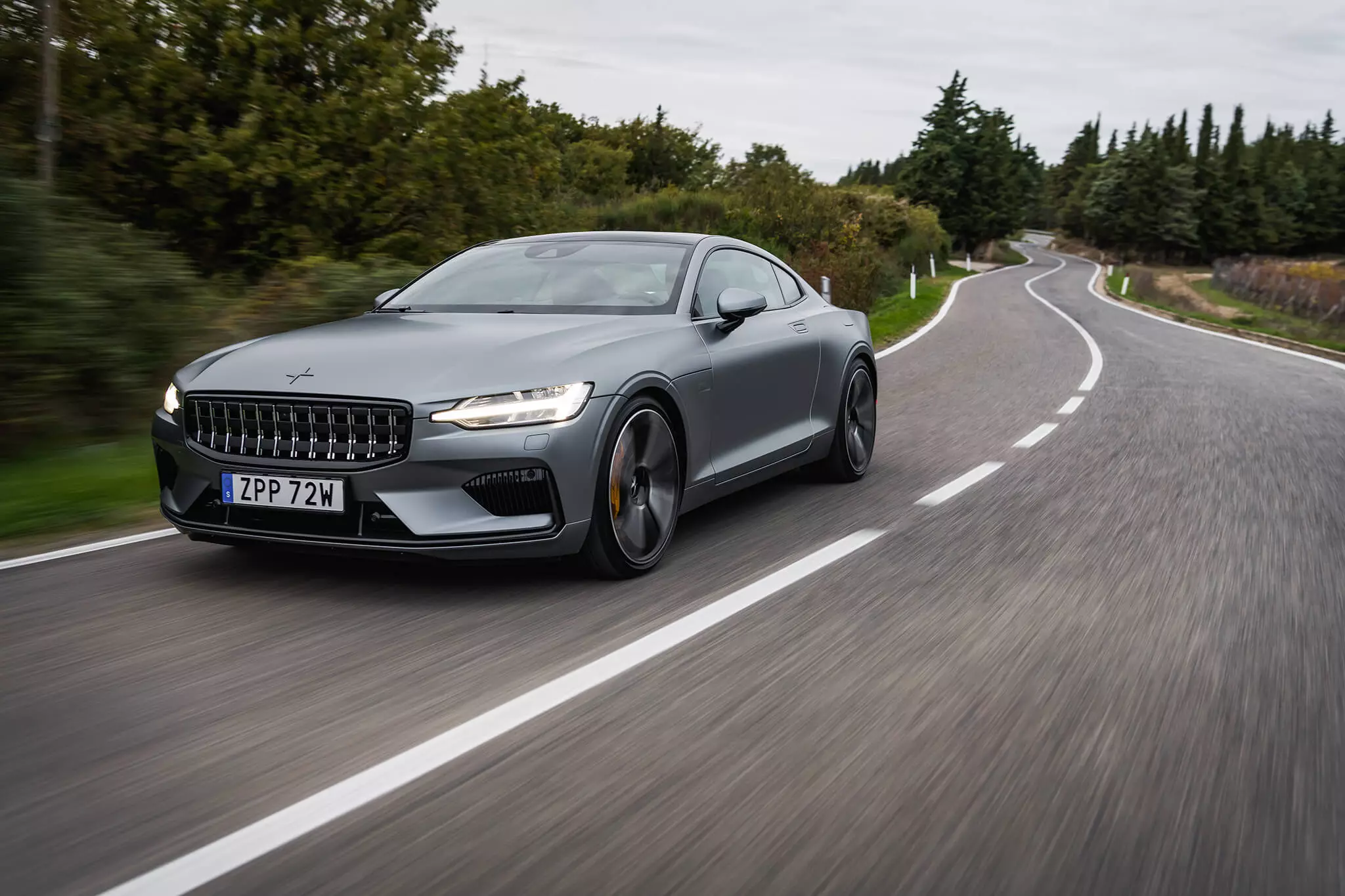
Part of the merit comes from the fact that each rear wheel has its own electric motor and planetary gear set that allow true torque vectoring — generating very stable accelerations in cornering — which means that instead of slowing down the inner wheel to improve curved trajectory accuracy, the outer wheel is accelerated to compensate for the difference to the inner wheel.
The balanced weight distribution (48:52) and the low center of gravity also play a role in this dynamic behaviour, which is quite different from the traditional, safe and probably rather tedious behavior of some of today's Volvos, and the braking (charged) front and rear ventilated discs) revealed competence, even in the face of major challenges, such as the sports car and the mammoth weight of this model.
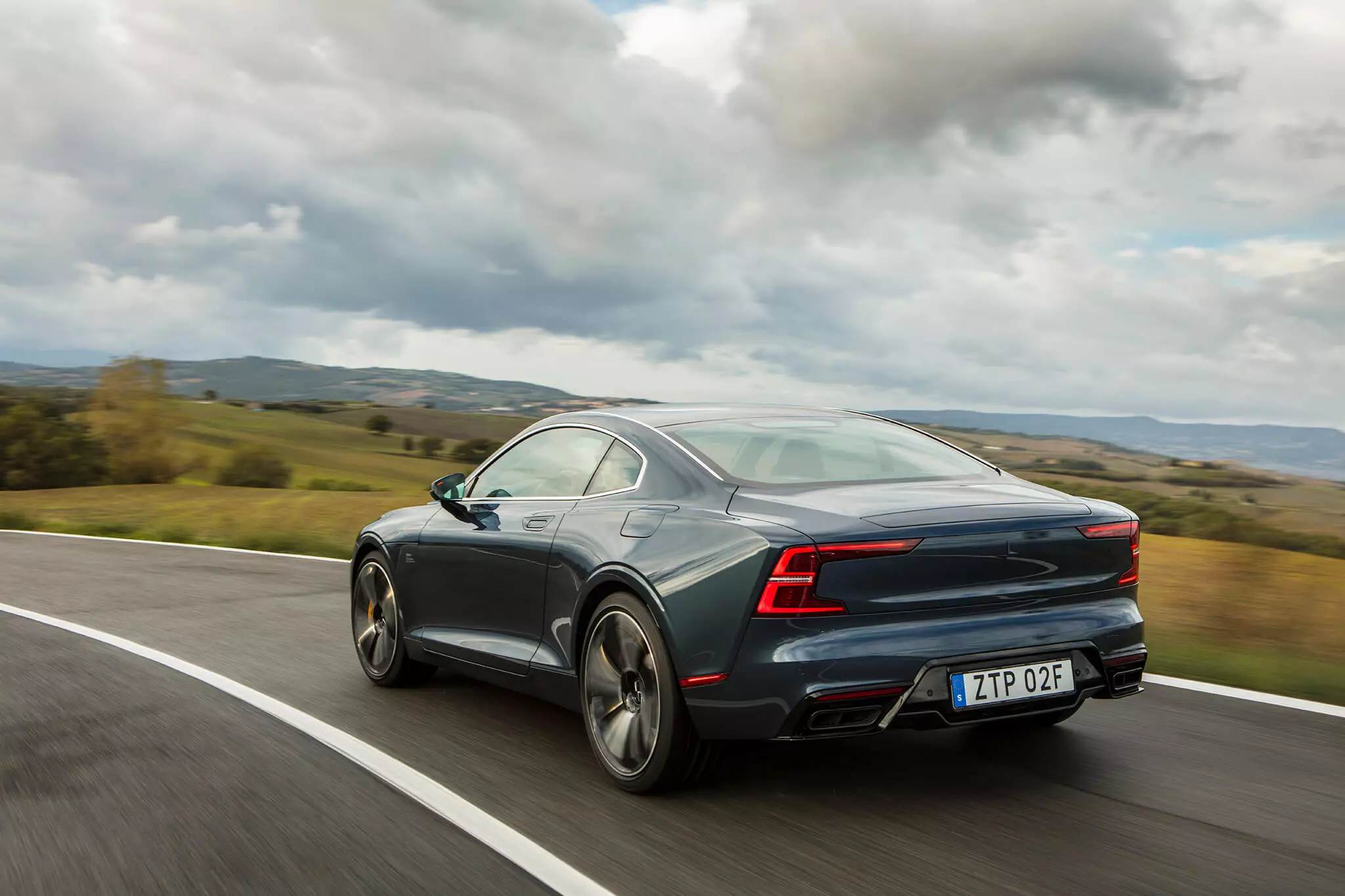
With a price of 155 000 euros (in Germany, there is still no price forecast for Portugal), the Polestar 1 is not an affordable electrified car, quite the opposite.
In that market it is significantly more expensive than a Tesla Model S or a Porsche Panamera Hybrid, probably because it doesn't need to seduce many customers, as only 1500 units will be built by hand in the next two years.
On the other hand, it can be considered a potential competitor to the BMW 8 Series, but sold at the price of a Bentley Continental GT…
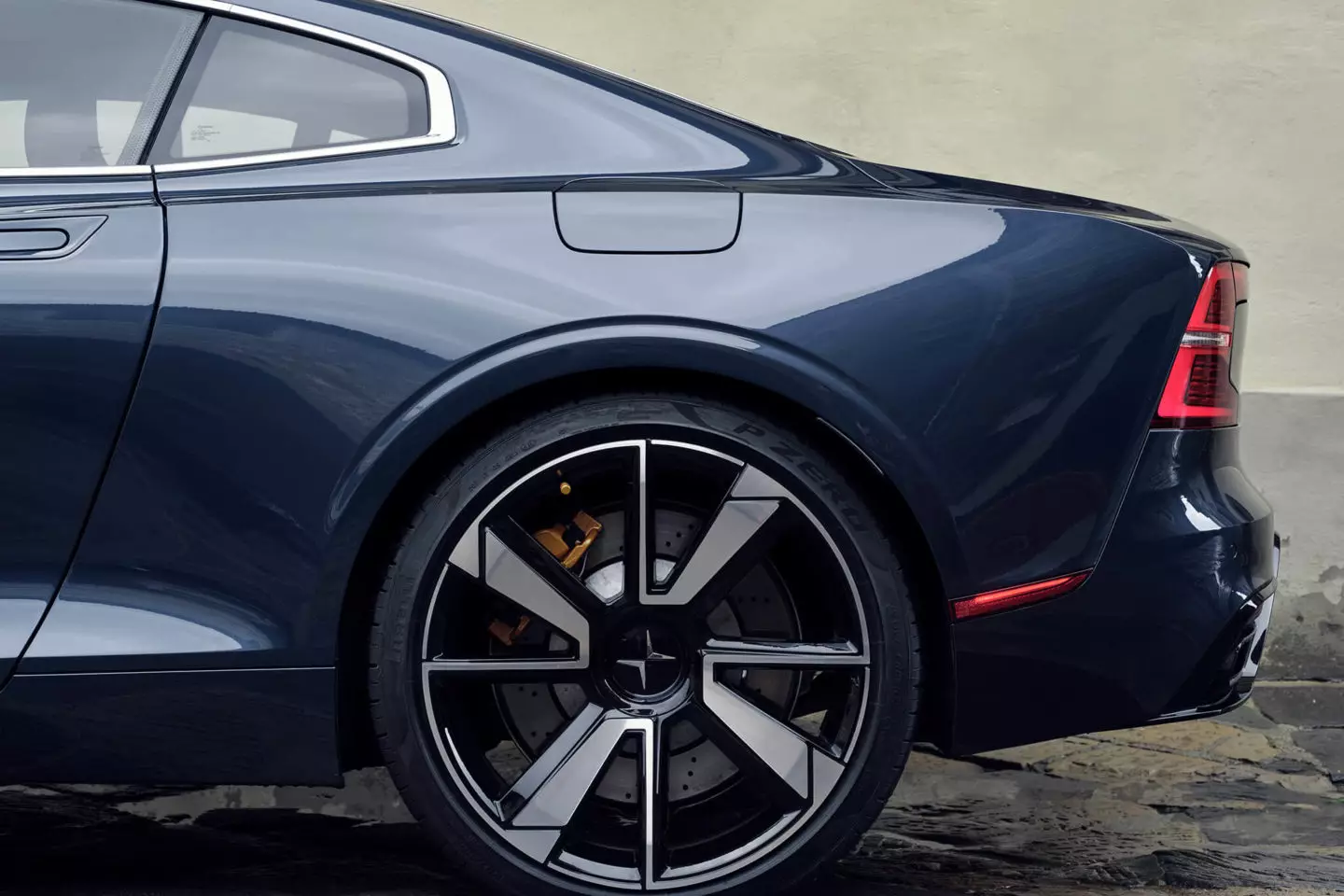
Technical specifications
| Polestar 1 | |
|---|---|
| combustion engine | |
| Architecture | 4 cylinders in line |
| Distribution | 2 ac/c./16 valves |
| Food | Injury direct, turbo, compressor |
| Capacity | 1969 cm3 |
| power | 309 hp at 6000 rpm |
| Binary | 435 Nm between 2600 rpm and 4200 rpm |
| Electric motors | |
| Engine 1/2 Position | Rear axle, one per wheel |
| power | 85 kW (116 hp) each |
| Binary | 240 Nm each |
| Engine/Generator 3 Position | Heat engine crankshaft |
| power | 52 kW (68 hp) |
| Binary | 161 nm |
| powertrain summary | |
| power | 609 hp |
| Binary | 1000 Nm |
| Streaming | |
| Traction | on four wheels |
| Gear box | Automatic (torque converter), 8 speed / Planetary gears for rear electric motors |
| Drums | |
| Type | Lithium Ions |
| Capacity | 34 kWh |
| Position | Pack 1: longitudinal under the front seats; Pack 2: transverse over the rear axle |
| Chassis | |
| Suspension | FR: Independent double overlapping triangles; TR: Independent, multiarm |
| brakes | FR: Ventilated discs; TR: Ventilated Discs |
| Direction | electrical assistance |
| turning diameter | 11.4 m |
| Dimensions and Capabilities | |
| Comp. x Width x Alt. | 4586 mm x 1958 mm x 1352 mm |
| Length between the axis | 2742 mm |
| suitcase capacity | 143 l (126 l with charging cables inside) |
| warehouse capacity | 60 l |
| Weight | 2350 kg |
| Wheels | Fr: 275/30 R21; Tr: 295/30 R21 |
| Provisions and consumption | |
| Maximum speed | 250 km/h |
| 0-100 km/h | 4.2s |
| mixed consumption | 0.7 l/100 km |
| CO2 emissions | 15 g/km |
| electrical autonomy | 125 km |
Authors: Joaquim Oliveira/Press-Inform.
